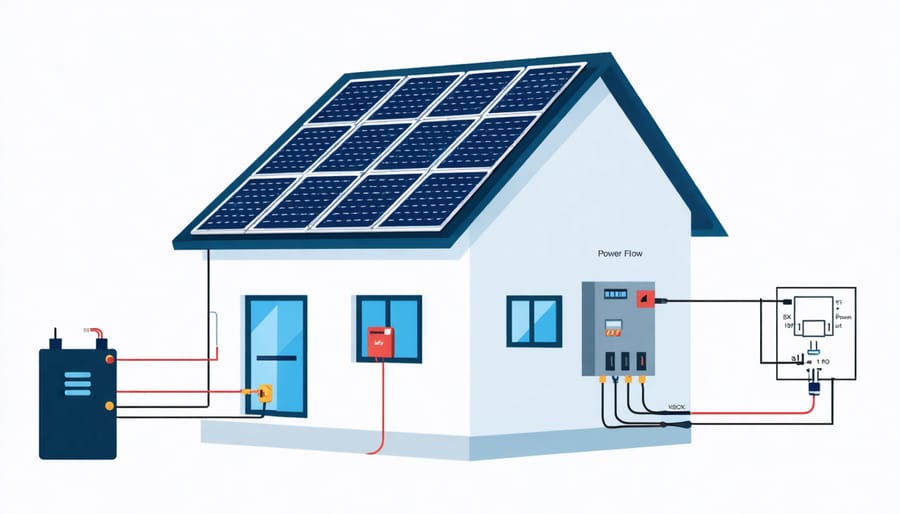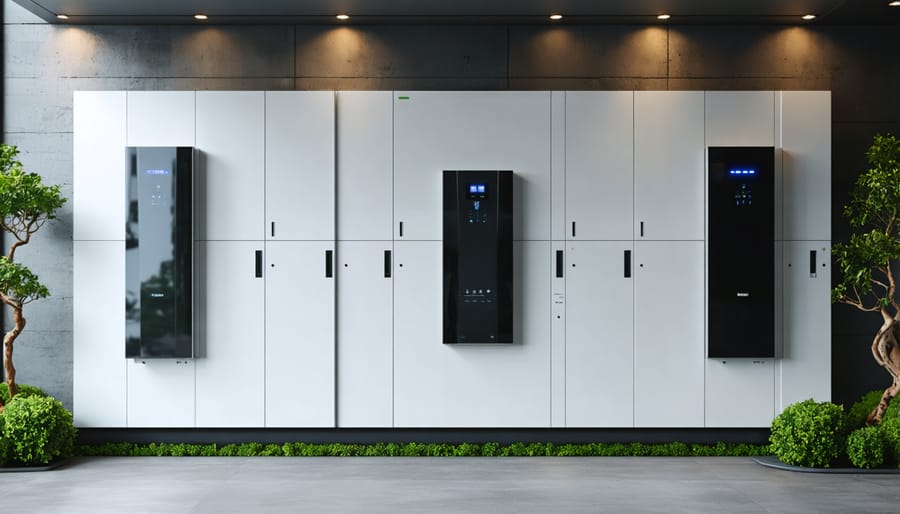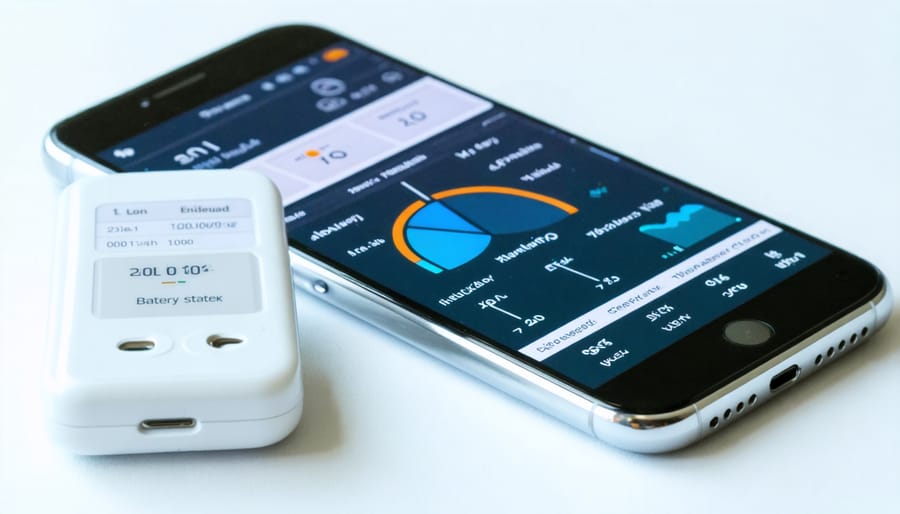Home Energy Storage: The Missing Link in Your Solar Power System

Transform your home into an energy-independent fortress with modern storage systems that capture and deploy power precisely when needed. As European energy prices continue to rise, hybrid solar systems paired with advanced battery storage offer homeowners unprecedented control over their electricity consumption and costs.
Today’s home energy storage solutions combine lithium-ion batteries, smart management systems, and seamless grid integration to deliver reliable power 24/7. These systems not only protect against outages but also maximize self-consumption of solar energy, storing excess daytime production for evening use when electricity rates peak.
For European homeowners, energy storage represents a critical stepping stone toward energy independence and reduced carbon emissions. Whether backing up essential circuits during grid failures or optimizing daily consumption patterns, modern storage systems adapt to each household’s unique energy profile while supporting the continent’s ambitious renewable energy goals.
The technology has matured significantly, with leading manufacturers now offering compact, efficient solutions that integrate seamlessly with existing solar installations or serve as the foundation for new clean energy projects. As battery costs continue to decline and energy prices rise, home storage systems are rapidly becoming a pragmatic investment in energy security and sustainability.

Why Your Solar Home Needs Energy Storage
24/7 Power Availability
Energy storage systems revolutionise how homes maintain power supply, ensuring continuous electricity availability regardless of weather conditions or time of day. When solar panels generate excess energy during peak sunlight hours, the storage system captures and reserves this surplus for later use. This seamless operation enables households to maintain consistent power supply during evenings, cloudy days, or even grid outages.
Modern storage solutions utilise advanced battery technology to efficiently manage power distribution. The system automatically switches between direct solar power consumption and stored energy, ensuring your home never experiences interruptions in electricity supply. This intelligent power management means you can run essential appliances, maintain lighting, and power electronic devices 24 hours a day.
The reliability of continuous power becomes particularly valuable during winter months when daylight hours are shorter in European regions. Storage systems bridge these seasonal gaps, providing energy independence and security. Additionally, many contemporary systems include smart monitoring features that allow homeowners to track their energy consumption and storage levels in real-time, optimising usage patterns for maximum efficiency.
Grid Independence and Security
Energy storage systems offer homeowners unprecedented control over their electricity consumption while enhancing their energy independence. By storing excess solar power for later use, these systems significantly reduce reliance on the traditional power grid, leading to greater energy autonomy and potential cost savings.
One of the most compelling advantages is the ability to provide backup power during grid failures. During blackouts or severe weather events, stored energy can keep essential household systems running, ensuring uninterrupted power supply to critical appliances, lighting, and security systems.
This enhanced security becomes increasingly valuable as extreme weather events and grid stability challenges become more frequent across Europe. Modern storage systems automatically detect grid outages and seamlessly switch to backup power mode, often within milliseconds. This transition is so smooth that household operations continue without disruption.
For communities embracing renewable energy, storage systems contribute to grid stability by reducing peak demand and supporting local energy networks. This collective benefit extends beyond individual households, fostering a more resilient and sustainable energy infrastructure for everyone.
Modern Storage Solutions for European Homes
Lithium-Ion Battery Systems
Lithium-ion battery systems have emerged as the leading energy storage solution for residential applications, combining reliable performance with increasingly attractive pricing. These systems typically consist of battery modules, an inverter, and sophisticated management electronics that ensure safe and efficient operation.
Modern lithium-ion storage systems offer impressive round-trip efficiency rates of up to 95%, meaning minimal energy loss during the storage and discharge process. With lifespans ranging from 10 to 15 years and warranty periods typically covering 10 years or 10,000 cycles, these systems provide long-term reliability for homeowners.
A standard residential lithium-ion battery system can store between 5 to 15 kWh of energy, sufficient to power an average European household during evening hours or brief grid outages. The modular nature of these systems allows for capacity expansion as energy needs grow, offering valuable flexibility for homeowners.
The technology continues to advance, with newer systems featuring enhanced safety mechanisms, smart energy management capabilities, and improved integration with home automation systems. Many current models include remote monitoring via smartphone apps, allowing users to track energy flow and optimise consumption patterns in real-time.
While initial investment costs remain significant, declining prices and increasing energy costs across Europe have substantially improved the economic proposition of residential battery storage. When paired with solar panels, these systems can achieve payback periods of 7-10 years in many European markets.

Smart Integration Features
Modern energy storage systems come equipped with sophisticated monitoring capabilities that transform how homeowners interact with their energy systems. Through dedicated mobile apps and web interfaces, users can track real-time energy production, consumption, and storage levels. These platforms enable precise control over smart battery integration and power flow management.
Most systems feature compatibility with popular smart home ecosystems like Google Home and Amazon Alexa, allowing seamless integration with other household devices. This connectivity enables automated responses to energy availability and pricing signals, optimising consumption patterns and reducing costs. Users can set preferences for battery charging during off-peak hours and prioritise stored energy usage during peak tariff periods.
Advanced monitoring systems also provide predictive analytics, using weather forecasts and historical usage patterns to optimise energy management. Real-time alerts notify homeowners about system performance, potential issues, and maintenance requirements. Many platforms offer detailed reporting features, helping users understand their energy independence levels and carbon footprint reduction.
For enhanced grid stability, these systems can participate in virtual power plant networks, allowing homeowners to contribute to broader energy management initiatives while potentially earning additional revenue. Regular software updates ensure systems remain current with evolving energy management technologies and grid requirements.

Storage Capacity Planning
Determining the right storage capacity for your home energy system requires careful consideration of several key factors. Your household’s daily energy consumption patterns form the foundation for optimal system sizing. For a typical European household of 2-3 people, a storage capacity between 5-8 kWh usually provides sufficient coverage for essential loads during evening hours and brief power outages.
Larger households of 4-5 people typically benefit from 10-15 kWh systems, especially when powering energy-intensive appliances like heat pumps or electric vehicle charging stations. To calculate your specific needs, analyze your electricity bills from the past 12 months, paying particular attention to winter consumption patterns when solar production is lower.
Consider future-proofing your installation by adding 20-30% capacity to accommodate potential increases in electricity usage. Smart meters can provide detailed consumption data, helping you identify peak usage periods and size your storage accordingly. Remember that climate conditions, roof orientation, and local regulations may influence your storage requirements.
For maximum efficiency, match your storage capacity to your solar generation potential. A general rule of thumb suggests storing 1.5-2 kWh per kW of installed solar capacity. This ratio ensures optimal utilization of your solar production while maintaining system cost-effectiveness.
Installation and System Integration
Retrofitting Existing Solar Systems
Adding energy storage to an existing solar installation is increasingly common and technically feasible for most European homes. The process typically begins with a comprehensive system assessment to evaluate your current solar setup, energy consumption patterns, and available space for battery installation.
Key considerations include your inverter compatibility – some older inverters may need replacement with hybrid models that can manage both solar panels and battery storage. The electrical panel might also require modernisation to accommodate the new storage system, particularly in homes with older electrical infrastructure.
The physical installation usually involves mounting the battery unit on a wall or floor, installing a new energy management system, and establishing proper connections between your existing solar array, the new battery, and your home’s electrical system. Modern storage solutions are designed to integrate seamlessly with most solar installations, though some additional wiring and safety components may be necessary.
Professional installers will need to reconfigure your system’s settings and potentially update monitoring software to optimise the interaction between solar generation and storage. They’ll also ensure compliance with local grid requirements and safety regulations, which vary across European regions.
The entire retrofitting process typically takes 1-2 days, depending on system complexity and any necessary electrical upgrades. Many manufacturers offer specific retrofit kits that simplify the integration process and ensure optimal system performance.
New Integrated Installations
Installing solar panels and energy storage systems simultaneously offers significant advantages over retrofitting storage to an existing solar setup. This integrated approach ensures optimal system compatibility and maximises overall performance while potentially reducing total installation costs.
The combined installation process begins with a comprehensive site assessment, where professionals evaluate your home’s energy requirements, roof conditions, and electrical infrastructure. This integrated planning allows for precise sizing of both solar panels and storage capacity, ensuring they work seamlessly together to meet your specific needs.
By installing both systems at once, you benefit from a single installation team, reduced labour costs, and streamlined electrical work. The inverter system can be chosen specifically to handle both solar generation and battery storage, eliminating the need for additional equipment or future modifications.
Modern integrated systems also feature sophisticated energy management software that optimises the flow of power between solar panels, batteries, and your home. This smart technology ensures you maximise self-consumption of solar energy while maintaining optimal battery health.
From a financial perspective, combining installations often results in better returns on investment. Many European countries offer enhanced incentives for integrated solar-plus-storage systems, and you’ll start benefiting from energy independence immediately. Additionally, having both systems installed together typically comes with comprehensive warranty coverage and simplified maintenance procedures.
The future-proof nature of integrated installations means your home is ready for upcoming smart grid innovations and potential energy market opportunities, such as virtual power plant participation.
Financial Considerations and ROI
Investment and Returns
Investing in a home energy storage system typically requires an initial outlay of €5,000 to €12,000, depending on the system capacity and technology chosen. While this may seem substantial, the long-term financial benefits often justify the investment. Most systems have a lifespan of 10-15 years, with warranties typically covering 10 years of operation.
The return on investment varies based on several factors, including local electricity rates, solar generation capacity, and consumption patterns. European households can expect to reduce their electricity bills by 60-80% through optimal use of stored energy during peak pricing periods. In countries with time-of-use tariffs, smart storage systems can automatically shift consumption to lower-rate periods, maximising savings.
Financial incentives across Europe further enhance the investment case. Many countries offer tax rebates, grants, or subsidies for energy storage installations. For instance, Germany provides low-interest loans and direct subsidies covering up to 45% of the installation costs. When combined with increased self-consumption rates and protection against rising energy prices, most systems achieve payback periods of 5-8 years.
European Incentives and Support
The European Union and individual member states offer various incentives to encourage the adoption of home energy storage systems. Through the NextGenerationEU initiative, homeowners can access grants covering up to 40% of battery storage installation costs. Many countries supplement these EU-level supports with national schemes – Germany’s KfW program provides low-interest loans and direct subsidies, while Italy offers tax deductions of up to 50% through the Superbonus scheme.
Local municipalities and regional governments frequently provide additional funding opportunities. These may include direct grants, tax incentives, or preferential financing terms. The Smart Finance for Smart Buildings Initiative facilitates access to these varied funding sources while providing technical assistance for implementation.
Regulatory frameworks across Europe increasingly support energy storage adoption. Recent EU directives have simplified permitting processes and established clear guidelines for grid connection. Many countries have introduced favorable feed-in tariff structures and demand-response programs that enhance the economic benefits of battery storage systems. Property owners can also benefit from reduced network charges and capacity fees when installing certified storage solutions.
The integration of energy storage systems in homes represents a crucial step toward achieving energy independence and sustainability in Europe’s evolving energy landscape. These systems not only provide reliable backup power but also maximize the value of renewable energy investments, particularly solar installations, by enabling homeowners to store and use their generated energy more efficiently.
As energy prices continue to fluctuate and grid stability becomes increasingly important, home energy storage offers a practical solution for managing household energy consumption while contributing to broader environmental goals. The technology has matured significantly, becoming more affordable and efficient, making it an increasingly attractive option for homeowners across Europe.
For those considering energy storage installation, the next steps include:
– Conducting a thorough assessment of household energy consumption patterns
– Consulting with qualified energy professionals to determine optimal system size
– Reviewing local regulations and available incentives
– Evaluating different battery technologies and their compatibility with existing or planned solar systems
– Obtaining multiple quotes from certified installers
Remember that while the initial investment may seem substantial, the long-term benefits of energy independence, reduced electricity costs, and increased property value make energy storage systems a worthwhile consideration for forward-thinking homeowners. As technology continues to advance and prices decrease, home energy storage will likely become an essential component of residential energy management systems throughout Europe.
Leave a Reply